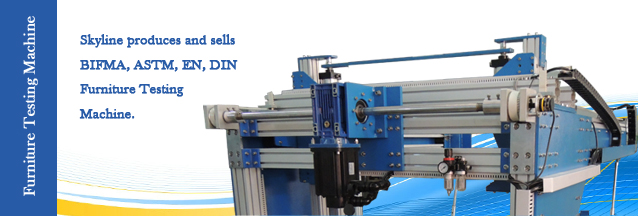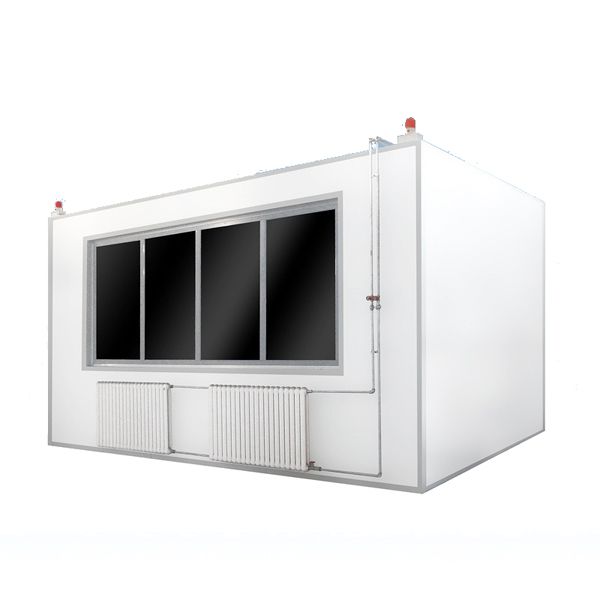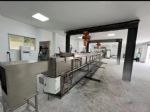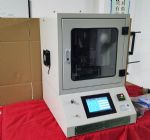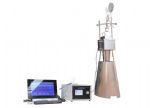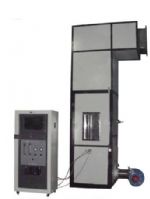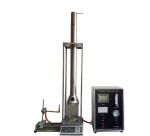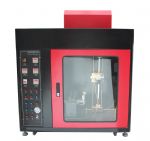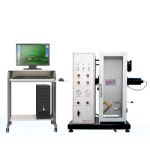 Toys Testing Equipment
Toys Testing Equipment Footwear Testing Equipment
Footwear Testing Equipment Tensile Testing Machine
Tensile Testing Machine Environmental Test Chamber
Environmental Test Chamber Building Material Flammability Test Equipment
Building Material Flammability Test Equipment Paper Testing Equipment
Paper Testing Equipment Spectacle Frames Testing Equipment
Spectacle Frames Testing Equipment Oil Analysis Testing Equipment
Oil Analysis Testing Equipment Lab Test Equipment
Lab Test Equipment Electronic Testing Equipment
Electronic Testing Equipment Stationery Testing Equipment
Stationery Testing Equipment Flammability Test Equipment
Flammability Test Equipment Furniture Testing Machine
Furniture Testing Machine Textile Testing Equipment
Textile Testing Equipment
 Toys Testing Equipment
Toys Testing Equipment Physical & Mechanical Testing
Physical & Mechanical Testing Flammability Testing
Flammability Testing Clamps for Toys Testing
Clamps for Toys Testing Electronic Toy Testing Equipment
Electronic Toy Testing Equipment ISO8124-4,EN71-8
ISO8124-4,EN71-8 Footwear Testing Equipment
Footwear Testing Equipment Fatigue Testing Equipment
Fatigue Testing Equipment Flexing Test Equipment
Flexing Test Equipment Impact Testing Equipment
Impact Testing Equipment Abrasion Testing Equipment
Abrasion Testing Equipment Waterproofness Tester
Waterproofness Tester Friction & Slip Testing
Friction & Slip Testing Tensile Testing Machine
Tensile Testing Machine Environmental Test Chamber
Environmental Test Chamber Building Material Flammability Test Equipment
Building Material Flammability Test Equipment Paper Testing Equipment
Paper Testing Equipment Spectacle Frames Testing Equipment
Spectacle Frames Testing Equipment Oil Analysis Testing Equipment
Oil Analysis Testing Equipment Lab Test Equipment
Lab Test Equipment Electronic Testing Equipment
Electronic Testing Equipment Stationery Testing Equipment
Stationery Testing Equipment Flammability Test Equipment
Flammability Test Equipment Furniture Testing Machine
Furniture Testing Machine Mattress Testing Machine
Mattress Testing Machine Table Testing Machine
Table Testing Machine Chair Testing Machine
Chair Testing Machine Textile Testing Equipment
Textile Testing Equipment Fabric and Garment Testing Instruments
Fabric and Garment Testing Instruments Color Fastness Testing Equipment
Color Fastness Testing Equipment
BS 8414-1 Window Fire Test Device
Fire-Proof Test For Outer Wall External Thermal Insulation Systen
Product introduction
The window fire test model simulates a vertical building surface consisting of a main wall and a vertical auxiliary wall.
The external thermal insulation system is installed on the building surface. The opening of the combustion chamber at the bottom of the test model simulates the windows or openings of the floor in the actual building. The ignited wood or gas flame overflows from the window to simulate the fire after ignition in the room. When a flame overflows from a window or hole, it attacks the external thermal insulation system, checks the damage degree of the external thermal insulation system, and judges its flame propagation. The total heat released in 30 minutes is about 4500 MJ, and the peak heat release rate is about (3 + 0.5) MW.
Standard : BS 8414-1:202 / GB/T 29416:2012
Performance characteristics
1. The test system provides the ignition alarm after 5 minutes. When ignited, the test start time can be automatically determined. At the same time, the test overtemperature can be automatically distinguished. At the same time, the computer can display combustion test by visual frequency. At the same time, computer software can record dropping time, collapse time, temperature value and display temperature curve and other test related information.
2. One wind speed sensor, 0-10M/S, with an accuracy of 0.1M/S;
3. Two cameras, including a computer display device 2.
4. K-type thermocouple: with stainless steel sheath, the temperature range is 0-1038 degrees, the temperature accuracy is (+0.1%) and the thermocouple wire is 500 feet.
5. ADAM-4118 Module: Strong 8-way Thermocouple Input module, 8-way independently configurable differential channel; Wide temperature operation; Wider operating temperature: -40-+85 degrees C; High noise resistance: 1KV surge protection voltage input, 3KV EFT and 8KV ESD protection; Strong anti-interference: 1KV surge protection at power input, 3KV EFT, 8KV ESD protection, wide. Power input range: +10~+48 VDC; input range: +10~+48 VDC;
6. Two computers;
7. Three electronic control boxes;
8. One signal conversion box;
9. Field wiring.
Electrical requirements: 220V, 50HZ, 5A
environmental requirements: temperature from 10°C to 35°humidity (65 ± 5) %
Application : building materials

 Toys Testing Equipment
Toys Testing Equipment Footwear Testing Equipment
Footwear Testing Equipment Tensile Testing Machine
Tensile Testing Machine Environmental Test Chamber
Environmental Test Chamber Building Material Flammability Test Equipment
Building Material Flammability Test Equipment Paper Testing Equipment
Paper Testing Equipment Spectacle Frames Testing Equipment
Spectacle Frames Testing Equipment Oil Analysis Testing Equipment
Oil Analysis Testing Equipment Lab Test Equipment
Lab Test Equipment Electronic Testing Equipment
Electronic Testing Equipment Stationery Testing Equipment
Stationery Testing Equipment Flammability Test Equipment
Flammability Test Equipment Furniture Testing Machine
Furniture Testing Machine Textile Testing Equipment
Textile Testing Equipment

 English
English 中文
中文 Español
Español française
française العربية
العربية Русский
Русский


